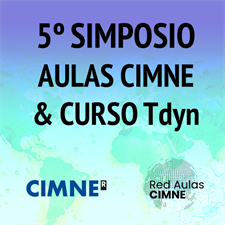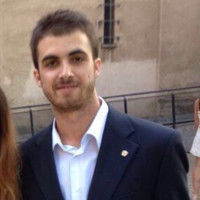events
[VIDEO AVAILABLE] CIMNE Coffee Talk: "Phase-field modeling of fracture via homogenization", by Gerard Villalta
ABSTRACT
In this talk, we present a novel phase-field modelling approach for brittle fracture that incorporates computational homogenization techniques to characterize the microstructural degradation of the material. Traditional phase-field models often implement degradation and dissipation functions in terms of the phase-field variable that, despite offering satisfactory results, their physical interpretation and their extension to anisotropic fracture behaviour is not always clear. To address this challenge, we have developed a framework inspired by the nucleation, growth, and coalescence of microstructural voids to model macroscopic fracture. The proposed approach employs homogenization techniques to calculate the effective material properties when introducing voids of varying sizes and shapes. By solving the homogenization problem for different void geometries, we obtain degradation functions that relate the size of microstructural voids to the homogenized constitutive tensor. These degradation functions provide a direct link between microscale damage mechanisms and macroscale fracture behaviour.
SPEAKER CV
 Gerard Villalta holds a Bsc & Msc in Aerospace Engineering (UPC-ESEIAAT).
Gerard Villalta holds a Bsc & Msc in Aerospace Engineering (UPC-ESEIAAT).
Member of the Composites and Advanced Materials for Multifunctional Structures (CAMMS) research group, he is currently enrolled in the second year of his PhD in Structural Analysis. Focusing in fracture mechanics, his research centers on developing innovative fracture models for composite materials using phase-field methods. These novel models aim to integrate approaches from topology optimization, homogenization, and iterative solvers to minimize the computational cost associated with such problems. The thesis is supervised by Dr. Àlex Ferrer and Dr. Fermín Otero.





















